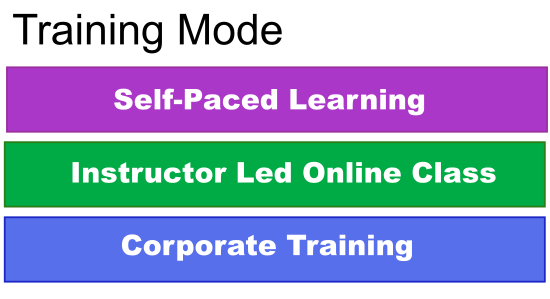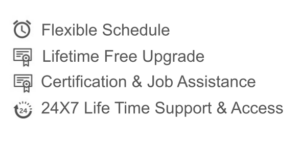Data Science Course In India
- Description
- Curriculum
- FAQ
Description
Welcome to my “ Data Science & Machine Learning from A-Z ” course.
Python with Machine Learning & Data Science, Data Visulation, Numpy & Pandas for Data Analysis, Kaggle projects from A-Z
Python is a computer programming language often used to build websites and software, automate tasks, and conduct data analysis. Python is a general-purpose language, meaning it can be used to create a variety of different programs and isn’t specialized for any specific problems.
Python instructors at Times Analytics specialize in everything from software development to data analysis and are known for their effective, friendly instruction for students of all levels.
Whether you work in machine learning or finance or are pursuing a career in web development or data science, Python is one of the most important skills you can learn.
Python’s simple syntax is especially suited for desktop, web, and business applications. Python’s design philosophy emphasizes readability and usability. Python was developed upon the premise that there should be only one way (and preferably one obvious way) to do things, a philosophy that has resulted in a strict level of code standardization. The core programming language is quite small and the standard library is also large. In fact, Python’s large library is one of its greatest benefits, providing a variety of different tools for programmers suited for many different tasks.
Do you want to learn one of the employer’s most requested skills? If you think so, you are at the right place. Python, machine learning, Django, python programming, machine learning python, python Bootcamp, coding, data science, data analysis, programming languages.
We’ve designed for you “Complete Python for Data Science & Machine Learning from A-Z” a straightforward course for the Complete Python programming language.
In the course, you will have down-to-earth way explanations of hands-on projects. With my course, you will learn Python Programming step-by-step. I made Python 3 programming simple and easy with exercises, challenges, and lots of real-life examples.
This Python course is for everyone!
My “Python: Learn Python with Real Python Hands-On Examples“ is for everyone! If you don’t have any previous experience, not a problem! This course is expertly designed to teach everyone from complete beginners, right through to professionals ( as a refresher).
Why Python?
Python is a general-purpose, high-level, and multi-purpose programming language. The best thing about Python is, that it supports a lot of today’s technology including vast libraries for Twitter, data mining, scientific calculations, designing, back-end server for websites, engineering simulations, artificial learning, augmented reality and what not! Also, it supports all kinds of App development.
No prior knowledge is needed!
Python doesn’t need any prior knowledge to learn it and the Ptyhon code is easy to understand for beginners.
What you will learn?
In this course, we will start from the very beginning and go all the way to programming with hands-on examples . We will first learn how to set up a lab and install needed software on your machine. Then during the course, you will learn the fundamentals of Python development like
-
Installing Anaconda Distribution for Windows
-
Installing Anaconda Distribution for MacOs
-
Installing Anaconda Distribution for Linux
-
Reviewing The Jupyter Notebook
-
Reviewing The Jupyter Lab
-
Python Introduction
-
First Step to Coding
-
Using Quotation Marks in Python Coding
-
How Should the Coding Form and Style Be (Pep8)
-
Introduction to Basic Data Structures in Python
-
Performing Assignment to Variables
-
Performing Complex Assignment to Variables
-
Type Conversion
-
Arithmetic Operations in Python
-
Examining the Print Function in Depth
-
Escape Sequence Operations
-
Boolean Logic Expressions
-
Order Of Operations In Boolean Operators
-
Practice with Python
-
Examining Strings Specifically
-
Accessing Length Information (Len Method)
-
Search Method In Strings Startswith(), Endswith()
-
Character Change Method In Strings Replace()
-
Spelling Substitution Methods in String
-
Character Clipping Methods in String
-
Indexing and Slicing Character String
-
Complex Indexing and Slicing Operations
-
String Formatting with Arithmetic Operations
-
String Formatting With % Operator
-
String Formatting With String.Format Method
-
String Formatting With f-string Method
-
Creation of List
-
Reaching List Elements – Indexing and Slicing
-
Adding & Modifying & Deleting Elements of List
-
Adding and Deleting by Methods
-
Adding and Deleting by Index
-
Other List Methods
-
Creation of Tuple
-
Reaching Tuple Elements Indexing And Slicing
-
Creation of Dictionary
-
Reaching Dictionary Elements
-
Adding & Changing & Deleting Elements in Dictionary
-
Dictionary Methods
-
Creation of Set
-
Adding & Removing Elements Methods in Sets
-
Difference Operation Methods In Sets
-
Intersection & Union Methods In Sets
-
Asking Questions to Sets with Methods
-
Comparison Operators
-
Structure of “if” Statements
-
Structure of “if-else” Statements
-
Structure of “if-elif-else” Statements
-
Structure of Nested “if-elif-else” Statements
-
Coordinated Programming with “IF” and “INPUT”
-
Ternary Condition
-
For Loop in Python
-
For Loop in Python(Reinforcing the Topic)
-
Using Conditional Expressions and For Loop Together
-
Continue Command
-
Break Command
-
List Comprehension
-
While Loop in Python
-
While Loops in Python Reinforcing the Topic
-
Getting know to the Functions
-
How to Write Function
-
Return Expression in Functions
-
Writing Functions with Multiple Argument
-
Writing Docstring in Functions
-
Using Functions and Conditional Expressions Together
-
Arguments and Parameters
-
High Level Operations with Arguments
-
all(), any() Functions
-
map() Function
-
filter() Function
-
zip() Function
-
enumerate() Function
-
max(), min() Functions
-
sum() Function
-
round() Function
-
Lambda Function
-
Local and Global Variables
-
Features of Class
-
Instantiation of Class
-
Attribute of Instantiation
-
Write Function in the Class
-
Inheritance Structure
With my up-to-date course, you will have a chance to keep yourself up-to-date and equip yourself with a range of Python programming skills. I am also happy to tell you that I will be constantly available to support your learning and answer questions.
Do not forget ! Python for beginners has the second largest number of job postings relative to all other languages. So it will earn you a lot of money and will bring a great change in your resume.
What is python?
Machine learning python is a general-purpose, object-oriented, high-level programming language. Whether you work in artificial intelligence or finance or are pursuing a career in web development or data science, Python bootcamp is one of the most important skills you can learn. Python’s simple syntax is especially suited for desktop, web, and business applications. Python’s design philosophy emphasizes readability and usability. Python was developed on the premise that there should be only one way (and preferably, one obvious way) to do things, a philosophy that resulted in a strict level of code standardization. The core programming language is quite small and the standard library is also large. In fact, Python’s large library is one of its greatest benefits, providing different tools for programmers suited for a variety of tasks.
Python vs. R: What is the Difference?
Python and R are two of today’s most popular programming tools. When deciding between Python and R in data science , you need to think about your specific needs. On one hand, Python is relatively easy for beginners to learn, is applicable across many disciplines, has a strict syntax that will help you become a better coder, and is fast to process large datasets. On the other hand, R has over 10,000 packages for data manipulation, is capable of easily making publication-quality graphics, boasts superior capability for statistical modeling, and is more widely used in academia, healthcare, and finance.
What does it mean that Python is object-oriented?
Python is a multi-paradigm language, which means that it supports many data analysis programming approaches. Along with procedural and functional programming styles, Python also supports the object-oriented style of programming. In object-oriented programming, a developer completes a programming project by creating Python objects in code that represent objects in the actual world. These objects can contain both the data and functionality of the real-world object. To generate an object in Python you need a class. You can think of a class as a template. You create the template once, and then use the template to create as many objects as you need. Python classes have attributes to represent data and methods that add functionality. A class representing a car may have attributes like color, speed, and seats and methods like driving, steering, and stopping.
What are the limitations of Python?
Python is a widely used, general-purpose programming language, but it has some limitations. Because Python in machine learning is an interpreted, dynamically typed language, it is slow compared to a compiled, statically typed language like C. Therefore, Python is useful when speed is not that important. Python’s dynamic type system also makes it use more memory than some other programming languages, so it is not suited to memory-intensive applications. The Python virtual engine that runs Python code runs single-threaded, making concurrency another limitation of the programming language. Though Python is popular for some types of game development, its higher memory and CPU usage limits its usage for high-quality 3D game development. That being said, computer hardware is getting better and better, and the speed and memory limitations of Python are getting less and less relevant.
How is Python used?
Python is a general programming language used widely across many industries and platforms. One common use of Python is scripting, which means automating tasks in the background. Many of the scripts that ship with Linux operating systems are Python scripts. Python is also a popular language for machine learning, data analytics, data visualization, and data science because its simple syntax makes it easy to quickly build real applications. You can use Python to create desktop applications. Many developers use it to write Linux desktop applications, and it is also an excellent choice for web and game development. Python web frameworks like Flask and Django are a popular choice for developing web applications. Recently, Python is also being used as a language for mobile development via the Kivy third-party library.
What jobs use Python?
Python is a popular language that is used across many industries and in many programming disciplines. DevOps engineers use Python to script website and server deployments. Web developers use Python to build web applications, usually with one of Python’s popular web frameworks like Flask or Django. Data scientists and data analysts use Python to build machine learning models, generate data visualizations, and analyze big data. Financial advisors and quants (quantitative analysts) use Python to predict the market and manage money. Data journalists use Python to sort through information and create stories. Machine learning engineers use Python to develop neural networks and artificial intelligent systems.
How do I learn Python on my own?
Python has a simple syntax that makes it an excellent programming language for a beginner to learn. To learn Python on your own, you first must become familiar with the syntax. But you only need to know a little bit about Python syntax to get started writing real code; you will pick up the rest as you go. Depending on the purpose of using it, you can then find a good Python tutorial, book, or course that will teach you the programming language by building a complete application that fits your goals. If you want to develop games, then learn Python game development. If you’re going to build web applications, you can find many courses that can teach you that, too. Udemy’s online courses are a great place to start if you want to learn Python on your own.
Why would you want to take this course?
Our answer is simple: The quality of teaching.
Dive in now!
We offer full support, answering any questions.
Python with Machine Learning & Data Science, Data Visulation, Numpy & Pandas for Data Analysis, Kaggle projects from A-Z
Who this course is for:
- Anyone who wants to start learning Python bootcamp
- Anyone who plans a career as Python developer
- Anyone who needs a complete guide on how to start and continue their career with Python in data analysis
- And also, who want to learn how to develop ptyhon coding
- People who want to learn python
- People who want to learn python programming
- People who want to learn python programming, python examples
-
17Measures of Central Tendency in DataText lesson
-
18Measures of DispersionText lesson
-
19Measures of DispersionText lesson
-
20Understanding Skewness in DataText lesson
-
21Understanding Skewness in DataText lesson
-
22Bayes TheoremText lesson
-
23Probability TheoryText lesson
-
24Hypothesis TestingText lesson
-
25Bayes TheoremText lesson
-
26Probability DistributionsText lesson
-
27Hypothesis TestingText lesson
-
33Analysis of Variance and CovarianceText lesson
-
34Analysis of Variance and CovarianceText lesson
-
35One way analysis of varianceText lesson
-
36Assumption of ANOVAText lesson
-
37Assumption of ANOVAText lesson
-
38Interpreting the ANOVA ResultsText lesson
-
39Statistics associated with one way analysis of varianceText lesson
-
40Interpreting the ANOVA ResultsText lesson
-
41Interpreting the ANOVA ResultsText lesson
-
42Analysis of CovarianceText lesson
-
43Two way analysis of varianceText lesson
-
44Interpreting the ANOVA ResultsText lesson
-
45Analysis of CovarianceText lesson
-
62Data Acquisition(Import & Export)Text lesson
-
63Data Acquisition(Import & Export)Text lesson
-
64IndexingText lesson
-
65IndexingText lesson
-
66Selection and Filtering SortingText lesson
-
67Selection and Filtering SortingText lesson
-
68Descriptive StatisticsText lesson
-
69Descriptive StatisticsText lesson
-
70Combining and Merging Data FramesText lesson
-
71Combining and Merging Data FramesText lesson
-
72Removing DuplicatesText lesson
-
73Removing DuplicatesText lesson
-
74Discretization and BinningText lesson
-
75Discretization and BinningText lesson
-
76String ManipulationText lesson
-
77String ManipulationText lesson
-
106Machine Learning Modelling FlowText lesson
-
107Machine Learning Modelling FlowText lesson
-
108How to treat Data in MLText lesson
-
109Parametric & Non-parametric MLText lesson
-
110Parametric & Non-parametric MLText lesson
-
111Types of Machine LearningText lesson
-
112Types of Machine LearningText lesson
-
113Introduction to Linear RegressionText lesson
-
114Introduction to Linear RegressionText lesson
-
115Linear Regression using Gradient DescentText lesson
-
116Linear Regression using Gradient DescentText lesson
-
117Linear Regression using OLSText lesson
-
118Linear Regression using OLSText lesson
-
119Linear Regression using Stochastic Gradient DescentText lesson
-
120Linear Regression using Stochastic Gradient DescentText lesson
-
121Project : Real Estate Price Prediction using Linear RegressionText lesson
-
122Project : Real Estate Price Prediction using Linear RegressionText lesson
-
139K Nearest NeighborText lesson
-
140K Nearest NeighborText lesson
-
141Understanding KNNText lesson
-
142Voronoi TessellationText lesson
-
143Voronoi TessellationText lesson
-
144Choosing KText lesson
-
145Choosing KText lesson
-
146Distance Metrics - Euclideam, Manhattan, ChebyshevText lesson
-
147Distance Metrics - Euclideam, Manhattan, ChebyshevText lesson
-
148Project : Case Study: Breast CancerText lesson
-
149Project : Case Study: Breast CancerText lesson
-
151Decision Tree & Random ForestText lesson
-
152Decision Tree & Random ForestText lesson
-
153Fundamental concepts of EnsembleText lesson
-
154Fundamental concepts of EnsembleText lesson
-
155Hyper-ParametersText lesson
-
156Hyper-ParametersText lesson
-
157Project 11: Case Study : Predicting bank term deposit subscription based on marketing dataText lesson
-
159Support Vector MachinesText lesson
-
160Support Vector MachinesText lesson
-
161What is SVM?Text lesson
-
162What is SVM?Text lesson
-
163When to use SVM?Text lesson
-
164When to use SVM?Text lesson
-
165What is Support Vector?Text lesson
-
166What is Support Vector?Text lesson
-
167Understanding HyperplaneText lesson
-
168Understanding HyperplaneText lesson
-
169Project 12: Predicting credibility of the credit card customersText lesson
-
170Project 12: Predicting credibility of the credit card customersText lesson
•tAnyone looking for a career transition to data engineering
•tIT professionals
•tExperienced professionals willing to learn data engineering
•tTechnical and non-technical professionals with basic-level programming knowledge can also apply
•tProject Managers
•tTata Consultancy Services (TCS)
•tLTI
•tAccenture
•tAmazon
•tInfosys
•tCapgemini











